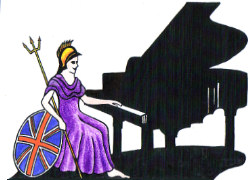Teachers, Accompanists and Piano Entertainers in the UK

UK Piano Page

121-125 Royal Avenue
Belfast, County Antrim BT1 1FF
Northern Ireland
The Belfast music scene has been quietly turning
Donaghadee, County Down BT21 0NL
Northern Ireland
We have a high quality range of New andAs-New
65 Caversham Road
Reading, Berkshire RG1 8AD
England
Today, we supply all styles of Acoustic Piano,
38 Joel Street
Northwood Hills
Northwood, London HA6 1PA
England
We are importers and distributors of new and
10 Portman Square
Baker Street
Marylebone, London W1H 6AZ
England
Music Festival for performers and guests Our 10th
18-06-2022 01:30PM
The Morecambe Bay Piano Group was set up to extend
11-12-2021 02:00PM
The Morecambe Bay Piano Group was set up to extend
08-01-2022 02:00PM
The Morecambe Bay Piano Group was set up to extend
12-02-2022 02:00PM